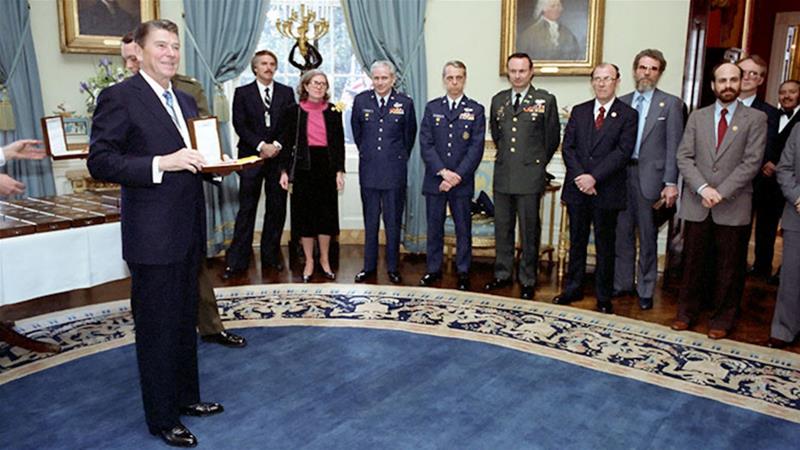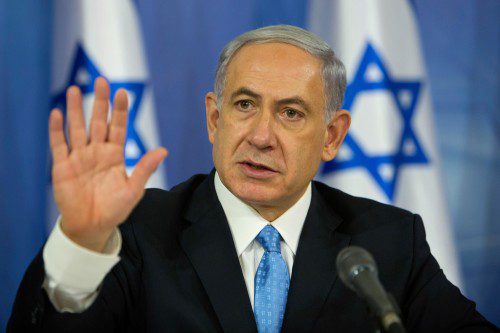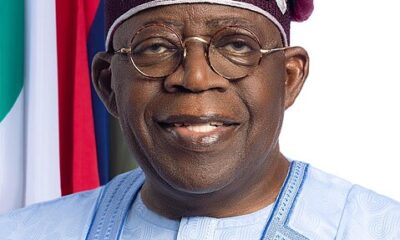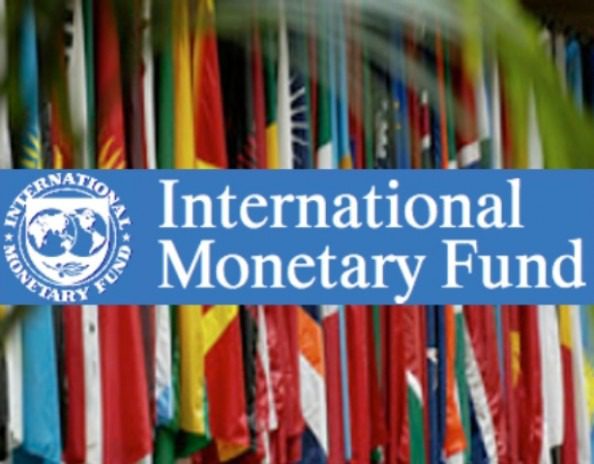Global Issues
Forty years after the Iran hostage crisis, its impact endures -By David Marks

On January 4, a day after the United States assassinated Iranian military General Qassem Soleimani, US President Donald Trump warned that if Iran retaliated, he would hit 52 Iranian sites. The targets represented the 52 Americans held hostage in Iran for 444 days in November 1979.
The Iran hostage crisis influences Iranian and US politics to this day. An open re-examination of it could help us understand how respect for US constitutional law has been degraded in the decades since.
Coup, revolution, coup
In early 1979, the shah of Iran, Mohammad Reza Pahlavi, installed in a 1953 coup to protect foreign oil interests, was overthrown by a revolution. In April that year, Iran voted by national referendum to become an Islamic republic.
Partially in response to the US giving refuge to the fleeing monarch,
and largely due to years of American support for a repressive regime,
students stormed the US embassy in Tehran on November 4, 1979, seizing
the Americans who worked there.
What followed led to then-US President Jimmy Carter‘s
demise. He lost to Ronald Reagan in a presidential race where his
inability to bring the hostages home was viewed by many as an
intolerable weakness.
Their release on January 20, 1981, the day of Reagan’s inauguration, was presented as Iran submitting to the threats he had made during his campaign. The world was asked to accept that the Iranian government despised Carter, but was daunted by Reagan, and feared what he might do to end the crisis.
For those who understood recent Iranian history, this explanation did not fly – the revolutionary government was unlikely to cower to any US intimidation.
But questions about the strange timing of the release were overshadowed by relief that the hostages were finally home. As outgoing President Carter stated, they were “alive, free, and well”.
In the years that followed, other events in the Middle East,
including a long, brutal war between Iran and Iraq, eclipsed most
interest in the issue. But in 1987 a scandal in the US would lead back
to the Iran hostage crisis and its resolution.
The Iran-Contra hearings revealed
that the Reagan administration had been engaged in an array of illegal
covert activities. A secret intelligence group in the White House
had funded the Nicaraguan Contras, armed right-wing groups that opposed
the Nicaraguan government, by selling sophisticated weapons to Iran,
including ground to air missiles.
Although the arming of the Contras was a stunning discovery – the sales defied a direct congressional prohibition –
it also raised the glaring question of how Reagan’s covert relationship
with Iran became intimate enough to include a secret supply of
weapons.
Reagan had appeared increasingly hostile towards Tehran throughout his presidency, so the revelation that his administration had no problem arming the Iranians was startling. Further investigation showed that covert arms sales to Iran by Israel and private companies had been tolerated by the US since the early 1980s.
As more details of the Iran-Contra affair came to light, the mystery deepened. In the congressional hearings, a witness testified that Reagan had secretly sent a birthday cake and an inscribed bible to Ayatollah Khomeini, Iran’s supreme leader.
A handful of researchers and reporters began to wonder if such gifts were the gesture of an old friend. Could the Reagan-Khomeini relationship have started during the 1980 US presidential election, they asked. Had the Republican campaign negotiated to delay the release of the hostages?
Carter’s administration had been working to bring the hostages home. Had it succeeded in doing so – securing an “October Surprise” – it would have greatly increased Carter’s chances of re-election.
If the charges were true, the Republican candidates and campaign staff allegedly involved were all private citizens at the time, with no authority to engage with a hostile foreign government, particularlyto manipulate the results of a US presidential election.
An impossible allegation
Abolhassan Bani-Sadr, the first president of the Islamic Republic of Iran after the 1979 revolution, forced to flee in 1981, has consistently stated that he knew of the deal between Reagan and Khomeini.
Gary Sick, a retired US Navy captain and a Middle East scholar who served on the National Security Councilunder Presidents Ford and Carter, was the most influential proponent of further investigation. He wrote an op-ed for the New York Times in 1991 (and shortly after, a book called October Surprise) that gave serious credence to the possibility of a successful effort by the Republican campaign to delay the release of the hostages. Because of his credentials and detailed research, the allegation was taken more seriously. He also became the subject of abuse and attacks for daring to present a case for re-examining the case.
The Shakespearean adage could not have been better applied; the critics “protested too much”.
The vehemence of the deniers only added incentive for investigators who continued to find reports and circumstantial evidence that a deal had been made. But anyone who approached the topic with an open mind was deemed a liar, a profiteer or a conspiracy theorist.
However, a huge problem emerged for those who sought to marginalise and scorn researchers. Some of the former US embassy hostages believed that foul play was a possibility and that they had been political pawns. As no one dared disparage those who had survived the ordeal, their request to Congress in 1992 for an inquiry was honoured and a formal investigation by a congressional taskforce was initiated.
Unwelcome questions
The Republicans were on the defensive during the months of closed testimony and information gathering. If it was proven that the Reagan-Bush campaign had made a deal with Iran to secure the presidency, it would be a severe blow to party members – including the sitting president, George HW Bush.
All of Washington’s legislators, even the Democratic majority leading the investigation, had a difficult choice: An affirmative finding could undermine whatever faith the country had in the US government for years to come.
Facts and truth had little weight in this matter. The Washington establishment eventually concurred there was no proof that any deal had been made.
The lack of political will and the numerous omissions of the congressional inquiry are not obvious from the 250 page Joint Report. If not for one person’s efforts, it would have stood unchallenged.
Due to the resolve and relentless diligence of investigative reporter Robert Parry, including his review of unpublished taskforce files after the report was released, we now know that many facts and pieces of evidence were ignored or omitted.
He also tracked how some editors, reporters and news outlets blindly mimicked those who needed to debunk the story.
A central focus of the investigation, followed by the press, was whether William Casey, Reagan’s campaign manager and later his CIA director, had attended a key meeting with Iranians in Madrid in September 1980. A weak alibi for Casey’s whereabouts was accepted, leading to a determination that it was impossible for him to have been in Spain at the time of any meeting. This was presented as a key revelation serving to blunt the inquiry.
Almost 20 years after the report was issued, Parry located a 1991 Bush White House memo confirming Casey’s Madrid trip; it had been withheld from the taskforce. The document would have had an explosive effect during the investigation but was virtually ignored when revealed in 2011.
Parry, an award-winning reporter (who also broke the story revealing clandestine White House operations, igniting the Iran-Contra affair) was marginalised by mainstream media and relentlessly attacked. His sin was doubting conventional wisdom, particularly the objectivity of the Joint Report.
Thanks to Parry’s determination to challenge and investigate the accepted version of the events of 1980, which he continued to do until his death in 2018, a trove of details that strongly support the allegations have been exposed.
The agenda endures
Examining the evidence, a hardened sceptic might still view the allegations as unprovable.
By the time of the October Surprisecongressional investigation in 1992, the Republicans accused of a conspiracy held the most powerful positions in government, including the presidency and leadership in the intelligence community. They had immense clout and influence over Congress and the press.
Furthermore, if a secret deal was made with Iran, those involved may have felt empowered to continue manipulating the political landscape in the years that followed.
The degradation of respect for constitutional law in the US today can be viewed as having its foundation in the events of 1980.
Impeachment hypocrisy
Mitch McConnell, Senate majority leader who recently delivered acquittal for Trump, was one of the angriest opponents of the investigation into the October Surprise, defending the Bush White House with as much vehemence as he has defended Trump’s impeachable offences.
Alan Dershowitz, one of Trump’s key attorneys in his impeachment trial, has attempted to normalise the treacherous activities of 1980.
William Barr was head of the Justice Department in 1992. He ensured George HW Bush would never face questions on Iran-Contra or the alleged deal with Iran, refusing to appoint a special prosecutor.
As Trump’s advocate and attorney general, Barr has staunchly stood by the president, diligently working to minimise the effect of impeachment and the Mueller Report, which detailed Russian interference in the 2016 presidential election. Barr is a veteran at protecting presidents, using whatever tactics work to keep them from the light of truth.
A recurring pattern
The win at all costs methodology in the US was not new in 1980 and goes back to at least 1968. The Nixon campaign used nefarious tactics to delay the end of the Vietnam war as the presidential election approached. It took more than 20 years for details of that to be revealed, but eventually, proof was divulged.
Sabotaging peace talks while troops were dying in 1968, delaying the release of hostages in 1980 or encouraging Russian support for Trump’s candidacy in 2016 are all symptomatic of the same self-serving ideology. Neither the ends nor the means are justifiable.
Manipulating elections, intimidating voters and ignoring the oversight powers of Congress have all become blatant norms for the Republicans. Democrats, unwilling to confront the worst tactics of political opponents decades ago, now face the continuing repercussions of their tolerance.
Yet, cracks continue to develop in the defence of the secret activities of the Reagan-Bush presidential campaign of 1980 and truth has its own unpredictable way of emerging.
Iran has been patient; the opportunity to use any incendiary evidence to their advantage has not arisen over the last 40 years. But Trump’s provocation could change that.
New revelations would not just rewrite the history of the era but could explode the political landscape of the US.
Perhaps once again Iran will hold influence in a US presidential election.


















